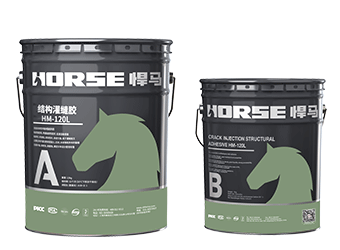Solutions
Horse Construction offers full range of structural strengthening materials with technical supports, documentation supports, products supports, project supports.
Bridge abutment strengthening
From the foundation up to the crack of the body, the width is narrower.
Cause analysis: the foundation is soft or the settlement is uneven.
Disposal suggestions: slight cracks are protected by surface repair method; serious need for foundation treatment, grouting cracks, seam sealing treatment.
Horizontal cracks in the body
Cause analysis: transverse cracks in abutments are caused by repeated loads. The blockage of the expansion joint causes the load of the vehicle to be transferred directly to the load-bearing member, so that the vehicle load along the direction of the road causes direct damage to the abutment, and the effect is accumulated over the fatigue strength of the concrete for a long time. Then there will be cracks in the direction perpendicular to the road, and the direction of the movement of the cracks is the direction of the traffic. At the same time, the instability of the geological foundation is also the main factor causing the abutment damage.
Disposal method: if the crack is relatively thin and shallow, the surface repair method can be used. If the width of the crack is larger, the closed treatment can be carried out first, and then the carbon fiber fabric can be stuck to prevent the continuous expansion of the cracks.
Vertical cracks in the front wall of the body
Cause analysis: generally due to loose foundation or uneven settlement.
Disposal suggestion: slight cracks are protected by surface repair; ground treatment is needed seriously, and then cracks are grouted and sewed.
Block crack
Reason analysis: under the long-term load of vehicles caused the bridge to the transverse slope direction deviation, has caused the squeeze block to produce cracks.
Disposal methods: The cracks produced by the retaining blocks should be repaired immediately to avoid endangering the stability of the bridge girder. The grouting method of grouting and seam sealing should be adopted. It uses the pressure equipment to press the cemented material into the cracks of the concrete, and the cemented material is hardened with the concrete to form a whole, thus the purpose of blocking and strengthening is made. Commonly used cementing materials are cement, epoxy, methacrylate, polyurethane and other chemical materials. The slotting method is the most commonly used method in the fracture sealing. It is usually used to insert plastic or rigid water stop materials along the chisel in the slot, so as to achieve the purpose of sealing the cracks. Commonly used plastic materials are PVC cement, plastic paste, butyl rubber and so on; commonly used rigid waterproof material is polymer cement mortar.
You can find anything here you are in need of, have a trust trying on these products, you will find the big difference after that.

High strength, unidirectional carbon fiber wrap pre-saturated to form a carbon fiber reinforced polymer (CFRP) wrap used to strengthen structural concrete elements.

Modified epoxy resin structural perfusion adhesive, specifically for supporting adhesive bonded steel reinforcement

Very strong penetration and low viscosity epoxy crack injection adhesive for repairing concrete crack